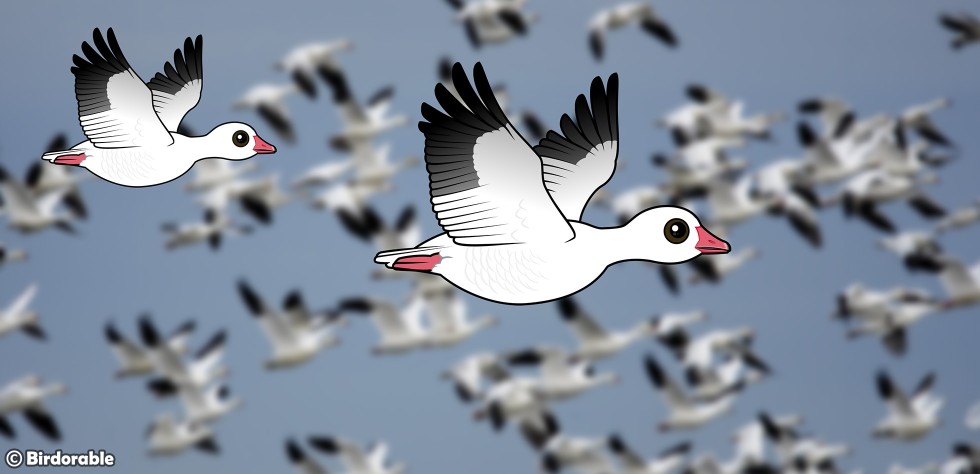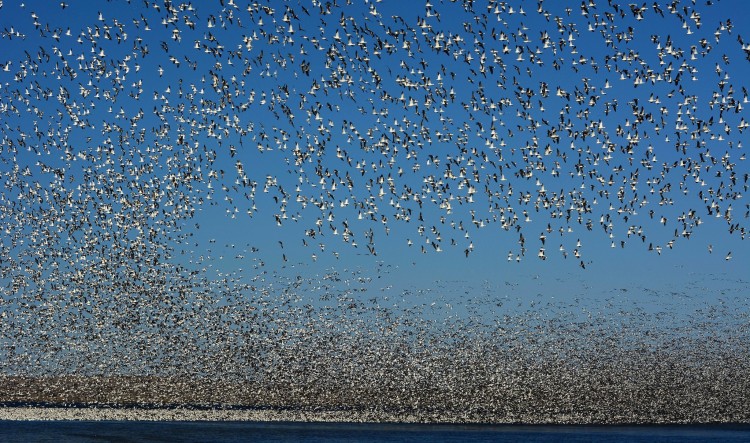October Bird Migration: Watch Birds on the Move

As the crisp air of October sweeps across the Northern Hemisphere, millions of birds are on the move, migrating to escape the cold and find food. Fall migration is in full swing this month, and bird enthusiasts have the chance to witness this incredible natural phenomenon. From songbirds to raptors, birds of all shapes and sizes are heading south, some traveling thousands of miles. Let’s take a look at a few species on the move in October, where they’re headed, and how birdwatchers can catch a glimpse of them along the way.
First, let's think about the robust and charismatic little Ruby-throated Hummingbird. After spending the summer in the eastern United States and parts of Canada, these tiny birds embark on an incredible journey south to Mexico and Central America. Along the way, they stop to refuel at feeders and flowers. If you live in their range, keeping your hummingbird feeders up through the end of the month may give you the chance to see these little travelers on their way out. Planting native flowers that they like to visit is a great way to naturally attract these flying jewels and help them along their journey.
Songbirds like the White-throated Sparrow and the Dark-eyed Junco are also on the move in October. These species breed in the northern parts of North America, including Canada and Alaska, and migrate southward to spend the winter in parts of the United States. White-throated Sparrows often visit backyard feeders, giving birdwatchers a great chance to observe them up close. Dark-eyed Juncos, commonly known as "snowbirds," can be seen hopping around under feeders as they arrive in southern wintering areas. In some regions, these birds signal the arrival of cooler weather.
Another spectacular group of migratory birds active in October is raptors. Species like the Broad-winged Hawk and the Sharp-shinned Hawk are heading to Central and South America for the winter. October is a great time to visit hawk-watching sites, where enthusiasts gather to witness large groups of raptors known as "kettles" soaring overhead. Locations like Hawk Mountain in Pennsylvania and Veracruz in Mexico are famous for their massive raptor migrations. Here in Florida we have the United States' southernmost hawk watch site with the Florida Keys Hawkwatch at Curry Hammock State Park. Some hawks travel over 4,000 miles during their migration, a truly awe-inspiring feat of endurance.

Snow Goose Migration by Rick Bohn for USFWS Mountain-Prairie (CC BY 2.0)
Waterfowl, including species like the Northern Pintail and the Snow Goose, are also on the move in October. These birds migrate from their northern breeding grounds in Canada and Alaska to wintering spots in the southern United States and Central America. Flocks of Snow Geese can number in the thousands, making for a breathtaking spectacle. Wetland areas and wildlife refuges are excellent places to observe migrating waterfowl as they stop to rest and feed during their journey.
One of the longest migrations in the world is undertaken by the Arctic Tern, a bird that travels from its Arctic breeding grounds to the Antarctic, covering up to 25,000 miles each year! Though Arctic Terns pass through more northerly regions in September, some can still be spotted heading south in early October. Coastal birdwatching sites are the best places to observe these incredible long-distance travelers.
If you’re interested in seeing migratory birds in October, there are several ways to increase your chances. Visiting known bird migration hotspots is one of the best options. Places like the Point Pelee National Park in Canada, Cape May in New Jersey, and many points along the Mississippi Flyway are prime spots for migration viewing. Many of these locations also host birding festivals in October, where birdwatchers gather to celebrate and observe the migration.
For backyard birders, setting up feeders with seeds, suet, or nectar can attract migratory species as they stop to refuel. Keeping an eye on the sky is also a good idea, as you might spot flocks of geese or kettling raptors flying overhead. Morning and late afternoon are often the best times to see birds in migration, as they are actively moving to find food and resting spots.
October is a magical time to witness bird migration. Whether you're watching Ruby-throated Hummingbirds buzzing through your garden or spotting a kettle of hawks soaring high above, there are plenty of opportunities to experience birds on the move this fall.














Comments
Leave a comment
Thank you!